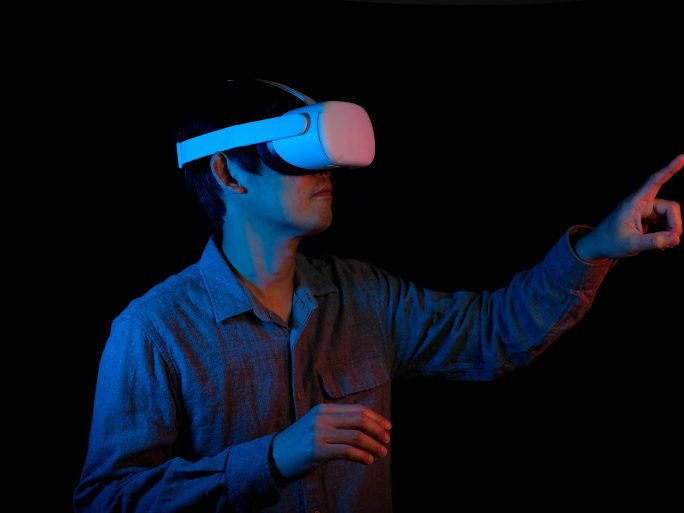Metaversum: Workplace of the Future with People at the Center

From July 17 to 19, the largest event for tech recruiting and employer branding will take place at the world’s largest developer conference “We Are Developers World Congress”.
We spoke to Austrian digital and transformation expert and keynote speaker Nahed Hatahet about the workplace of the future, the metaverse and the human factor during his keynote session entitled “Metaverse – Tomorrow’s Ultimate Workplace”.
What exactly do you mean by the metaverse and what does it have to do with the workplace of the future?
Nahed Hatahet: Just as we can join a two-dimensional video conference with a single mouse click today, we will also be able to join so-called immersive meetings – metameetings – in the future. We will use metaverse technology, or rather mixed reality. This combines the real physical world with virtual possibilities and brings together the advantages of both worlds. For example, we can display virtual objects in our real world, such as a virtual flipchart, and use them together with other participants. However, we can also meet in three-dimensional virtual spaces. We have the feeling that these objects are actually present in our real world or that we are really in this mixed reality. It is a truly different experience to what is possible in two-dimensional web conferences today.
Which business scenarios can be covered with it, and why should you start looking into it today?
Nahed Hatahet: There are an infinite number of new possibilities, some of which I will discuss in my keynote speech in Berlin. One obvious example is immersive meetings and conferences that can be experienced and felt at the touch of a button. In Microsoft Teams, there are already avatars, i.e. the graphical representatives of me in such a mixed reality. Furthermore, there are already “immersive spaces”, integrated via Microsoft Mesh technology. Other scenarios include remote support, experiential learning, practising dangerous tasks in a protected environment, virtual job interviews and gamification. A very good scenario is also the best possible digital inclusion of blind or hearing-impaired people. We can use skills that we don’t even have in our real physical world. Our avatar can speak all the world’s languages and also use sign language. Any blind person can use artificial intelligence to add an assistant who can, for example, describe the surroundings, a digital prompter. A wonderful example of how this can create a better world, as I personally see it.
How will this develop in the future? Is Apple Vision Pro an example of where the journey is heading?
Nahed Hatahet: At the moment, we are still scratching the surface and are at the beginning of an exciting journey into a new digital world that will massively change our workplace, but will also take time. Anyone who looks at the Apple Vision Pro headset that has already been launched in the USA knows where the journey will take us. Personally, I think Apple is once again showing how it should be done: Much better graphics and the use of natural gestures to move and interact in the three-dimensional world – you just use your hands. The distant future will be the combination of biotechnology and artificial intelligence as well as implanted “mixed reality chips”, which are supposed to promise a real symbiosis and a presence that can be felt in the brain. That sounds bizarre, and it certainly is a little – but then again, many people today also have implanted technologies in their bodies. Just think of pacemakers, which probably also sounded bizarre to many people when they were invented. One thing is clear: it remains incredibly exciting, as I deeply feel.
You have always put people at the center of your digital activities. The current market trend and hype now confirms this. What do you mean by that?
Nahed Hatahet: In everything I do, it has always been important to me to create a better world. We must all work together to ensure that these technologies are used in this direction. 20-30 percent of our children are already suffering from anxiety disorders and depression caused by too much social media consumption, and that’s scary. With the new possibilities of mixed reality, we have the next generation of the internet where we can truly meet and be anything we want through avatars. This is the next digital drug for our children. We must make sure that we show our children above all how beautiful and precious our real world is and that the new digital possibilities are only a means to an end. It is imperative that we educate them in schools and our education system and help children to understand the digital world as an extension of our natural world and not as a substitute. This is a particular concern of mine when I talk about putting people at the center – for me this is not a trend or marketing, I really mean it deeply.
![]()
is the founder and CEO of HATAHET productivity solutions.